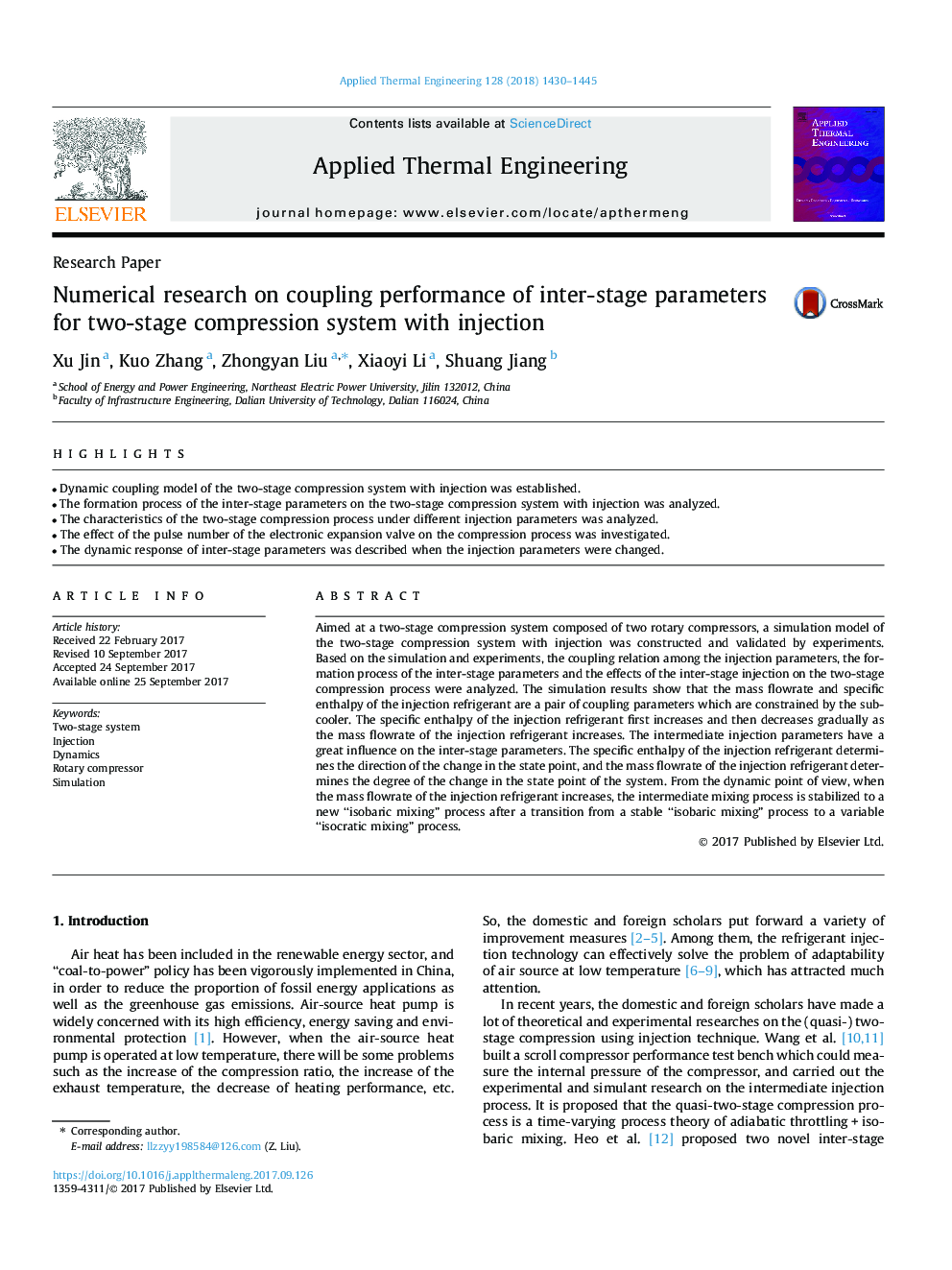| کد مقاله | کد نشریه | سال انتشار | مقاله انگلیسی | نسخه تمام متن |
|---|---|---|---|---|
| 4990886 | 1368115 | 2018 | 16 صفحه PDF | دانلود رایگان |
- Dynamic coupling model of the two-stage compression system with injection was established.
- The formation process of the inter-stage parameters on the two-stage compression system with injection was analyzed.
- The characteristics of the two-stage compression process under different injection parameters was analyzed.
- The effect of the pulse number of the electronic expansion valve on the compression process was investigated.
- The dynamic response of inter-stage parameters was described when the injection parameters were changed.
Aimed at a two-stage compression system composed of two rotary compressors, a simulation model of the two-stage compression system with injection was constructed and validated by experiments. Based on the simulation and experiments, the coupling relation among the injection parameters, the formation process of the inter-stage parameters and the effects of the inter-stage injection on the two-stage compression process were analyzed. The simulation results show that the mass flowrate and specific enthalpy of the injection refrigerant are a pair of coupling parameters which are constrained by the subcooler. The specific enthalpy of the injection refrigerant first increases and then decreases gradually as the mass flowrate of the injection refrigerant increases. The intermediate injection parameters have a great influence on the inter-stage parameters. The specific enthalpy of the injection refrigerant determines the direction of the change in the state point, and the mass flowrate of the injection refrigerant determines the degree of the change in the state point of the system. From the dynamic point of view, when the mass flowrate of the injection refrigerant increases, the intermediate mixing process is stabilized to a new “isobaric mixing” process after a transition from a stable “isobaric mixing” process to a variable “isocratic mixing” process.
Journal: Applied Thermal Engineering - Volume 128, 5 January 2018, Pages 1430-1445
